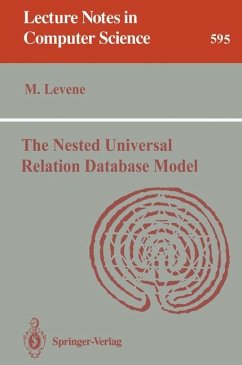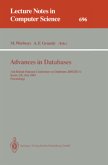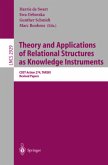This monograph describes a method of data modelling whosebasic aim is to make databases easier to use by providingthem with logical data independence. To achieve this, thenested UR (universal relation) model is defined by extendingthe classical UR model to nested relations. Nested relationsgeneralize flat relations and allow hierarchicallystructured objects to be modelled directly, whereas theclassical UR model allows the user to view the database asif it were composed of a single flat relation. The authorpresents a comprehensive formalisation of the nestedrelational model, which incorporated null values into themodel. Functional data dependencies and the classical notionof lossless decomposition are extended to nested relationsand an extended chase procedure is defined to test thesatisfaction of the data dependencies. The nested UR modelis defined, and the classical UR model is shown to be aspecial case of the nested model.This implies that an URinterface canbe implemented by using the nested UR model,thus gaining the full advantages of nested relations overflat relations.
Hinweis: Dieser Artikel kann nur an eine deutsche Lieferadresse ausgeliefert werden.
Hinweis: Dieser Artikel kann nur an eine deutsche Lieferadresse ausgeliefert werden.








